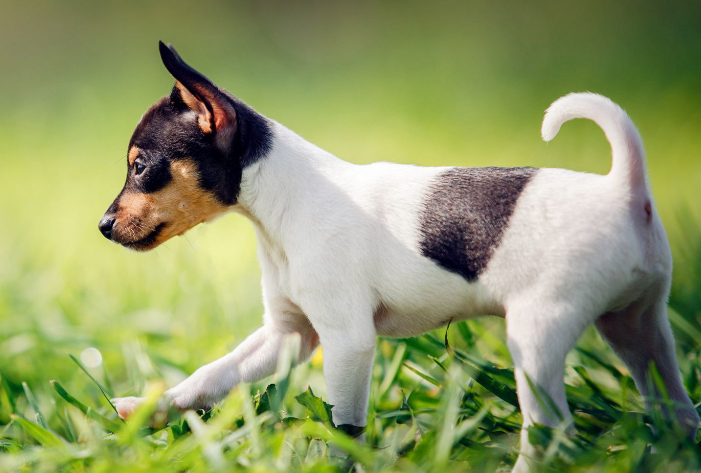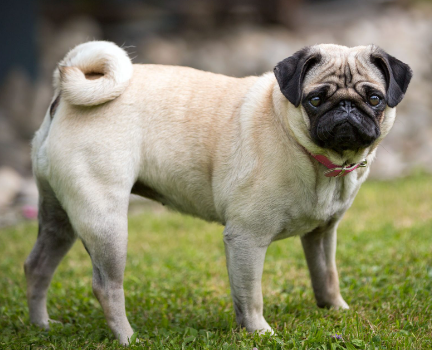The Samoyed, a herding dog of medium size, boasts a dense, white, double-layered coat. As a spitz-type canine, it draws its name from the Samoyed people residing in Siberia. Originating from the Nenets herding Laika, these dogs have been domesticated to aid in herding, hunting, protection, and sled pulling.
Mostly adorned in white, Samoyed dogs may exhibit a double-layered coat with a natural brown tint, serving as a built-in defense against dirt.
These versatile canines are renowned for their involvement in expeditions to both the Arctic and Antarctic regions, showcasing not only their resilience but also their amiable and accommodating nature.
Samoyed Dog at a Glance
| HEIGHT: 19-23.5″ |
| WEIGHT: 35-65 lb |
| TYPE: Working |
| FAMILY: Northern |
| DATE OF ORIGIN: Ancient times |
| AREA OF ORIGIN: Russia (Siberia) |
| OTHER NAMES: Samoyedskaya |
History Of Samoyed
According to legend, the Samoyed people, along with their dogs, were compelled by other tribes to journey relentlessly northward until they reached the very brink of the world—a vast expanse of snow and ice.
Living a nomadic lifestyle, they herded reindeer with the assistance of their adept dogs, which also pulled sleds and provided warmth during the frigid nights.
Through DNA analysis of the canine genome, the Samoyed is identified as one of fourteen breeds, offering a glimpse into the appearance of early dogs.
In more recent history, Samoyeds played crucial roles in the Arctic and Antarctic explorations led by Nansen, Shackleton, Scott, and Amundsen. Queen Alexandra of Britain, the wife of Edward VII, held a deep affection for the breed, and many of her dogs continue to influence the pedigrees of English and American Samoyeds.
The American Kennel Club officially recognized the Samoyed in 1906, and to this day, it holds the 72nd position among breeds registered by the AKC.
Breed Characteristics
| Apartment Friendly: 3 Points | Shedding Level: 5 Points | Dog Friendly: 4 Points |
| Child Friendly: 5 Points | Exercise Needs: 4 Points | Territorial: 5 Points |
| Barking Tendencies: 4 Points | Adaptability: 4 Points | Trainability: 3 Points |
| Grooming: 4 Points | Health Issues: 3 Points | Social Needs: 4 Points |
| Energy Level: 3 Points | Affectionate: 5 Points | Watchdog Instincts: 5 Points |
| Cat Friendly: 3 Points | Intelligence: 3 Points | Stranger Friendly: 3 Points |
Samoyed Dog Appearance:
Beholding a Samoyed adorned in a lavish coat of brilliant white fur is truly a spectacle. Whether observed from the pointed tips of their triangular ears to the gracefully curved ends of their tails, a stationary Samoyed could easily be mistaken for an untouched snowdrift within the enchanting Nordic landscape.
Purebred Samoyeds showcase equally remarkable coats in solid colors of cream and biscuit, as well as striking combinations of white and biscuit.
To endure freezing temperatures, these dogs are equipped with a dense, weather-resistant double coat, featuring a silky underlayer. Muscular and poised for action, they boast short, sturdy legs that propel them with agility.
Standing at around 2 feet tall, male Samoyeds can reach up to 60 pounds, while females may be as petite as 35 pounds. With a broad chest and a halo of thick fur, the Samoyed’s length matches its height.
Affectionately known as “Smiling Sammy,” these amiable dogs owe their moniker to their short snouts and upturned mouths, preventing the formation of icicles and creating a naturally playful expression.
Accentuating their charm, dark black or brown almond-shaped eyes twinkle with a touch of excitement, often accompanied by a slight twitch when these delightful dogs find themselves truly exhilarated.

Samoyed Dog Temperament:
The warm and affectionate disposition of Samoyeds renders them less effective as guard dogs, as aggressive tendencies are infrequent. Their hallmark features include an alert and joyful expression, leading to endearing nicknames like “Sammy Smile” and “Smiley Dog.”
Although not known for guarding, their propensity to bark makes them lively watch dogs, sounding the alarm when someone approaches their domain. Samoyeds excel as companions, particularly for young children and other dogs, maintaining their playful demeanor well into their senior years.
As noted by the Samoyed Club of America, boredom may prompt destructive behavior or digging in Samoyeds. Drawing from their sled dog lineage, these dogs are not averse to pulling objects, and an untrained Samoyed may prefer pulling its owner on a leash rather than walking alongside.
Samoyed Dog Personality:
A well-bred Samoyed is an intelligent, gentle, and devoted companion. Known for its friendliness and affection toward its family, including children, this breed thrives on active participation in household activities.
The Samoyed is not inclined to be a solitary dog; it craves close companionship with its human family and is ill-suited to extended periods alone in a kennel or backyard. Its loyalty and alertness, however, make it a reliable watchdog.
Despite its domesticated nature, the Samoyed retains a hunting instinct, potentially chasing small animals perceived as prey. For safety, it’s advisable to keep the dog leashed when outside its securely fenced yard.
The temperament of a Samoyed is shaped by various factors, including genetics, training, and socialization. Well-natured puppies display curiosity and playfulness, readily engaging with people. Opting for a middle-of-the-road puppy, avoiding extremes like excessive aggression or extreme shyness, is recommended.
Meeting at least one parent, typically the mother, provides insight into the desired temperament. Interaction with siblings or other relatives aids in assessing the future behavior of the puppy.
Socialization is crucial for Samoyeds, requiring exposure to diverse people, sights, sounds, and experiences during their early stages. Enrolling them in a puppy kindergarten class and incorporating regular interactions with visitors, leisurely walks in busy parks, dog-friendly stores, and meetings with neighbors contribute to honing their social skills.
Samoyed for Sale
When searching for Samoyeds for sale, it’s crucial to research and choose a responsible source. Ensure that the breeder prioritizes the health and well-being of the dogs and follows ethical breeding practices.
Remember to be cautious about potential scams, especially when dealing with online listings. Always ask for health records, visit the breeder if possible, and ensure that the conditions in which the puppies are raised are humane and sanitary.
Samoyed Price:
As of my last knowledge update in January 2022, Samoyed puppies’ prices can vary based on factors such as location, breeder reputation, lineage, and whether the dog is intended for show or pet purposes. On average, you can expect to pay anywhere from $1,000 to $3,000 or more for a Samoyed puppy from a reputable breeder.
Always be cautious about extremely low prices, as they could be a red flag for potential health or ethical issues. Additionally, consider adoption from shelters or rescue organizations, as there may be Samoyeds in need of loving homes. Adoption fees are generally lower than purchasing from a breeder, and you’re providing a home for a dog in need.
Samoyed Puppies:
If you’re interested in acquiring a Samoyed puppy, there are several avenues you can explore to find a reputable breeder or consider adoption:
Reputable Breeders:
Look for breeders who are recognized and respected in the Samoyed community. You can check with breed clubs or organizations for recommendations.
Attend dog shows or events where Samoyeds are featured. This is an opportunity to meet breeders, see their dogs, and ask questions.
Breed Clubs and Organizations:
Contact Samoyed breed clubs and organizations, such as the Samoyed Club of America (SCA), for breeder referrals. These organizations often have strict ethical guidelines for their members.
Online Platforms:
Websites and platforms that specialize in connecting potential buyers with breeders can be useful. However, exercise caution and thoroughly research any breeder you find online.
Local Shelters and Rescues:
Consider adopting from local animal shelters or rescue organizations. Samoyeds and other purebred dogs are sometimes available for adoption, providing a loving home for a dog in need.
When contacting breeders or rescue organizations, make sure to ask about the health and socialization practices they follow for their puppies. Responsible breeders prioritize the health and well-being of their dogs and provide a supportive environment for their early development.
Remember that owning a dog is a long-term commitment, and it’s important to choose a reputable source to ensure the well-being of the animal. Always be wary of puppy mills or unscrupulous breeders who prioritize profit over the welfare of the dogs.
Samoyed Puppies for Sale
Reputable Breeders:
Contact reputable Samoyed breeders who are known for ethical breeding practices. You can check with breed clubs, such as the Samoyed Club of America (SCA), for breeder referrals.
Online Platforms:
Visit well-known websites that connect potential buyers with breeders, such as the AKC Marketplace or reputable breed-specific platforms. Make sure to research the breeders thoroughly before making any commitments.
Local Shelters and Rescues:
Check with local animal shelters and rescue organizations. Sometimes, Samoyeds and other purebred dogs are available for adoption.
Social Media and Forums:
Join online forums or social media groups dedicated to Samoyeds. Members may share information about available puppies or refer you to trustworthy breeders.
When dealing with breeders, always ask about the health and socialization practices for the puppies. Reputable breeders prioritize the well-being of their dogs and provide a supportive environment for their early development.
Please be cautious and ensure that you are dealing with a responsible source, as there are scams and unethical practices in the pet industry. If possible, visit the breeder in person to see the conditions in which the puppies are raised.
Health About Samoyed
Samoyeds typically enjoy good health, and conscientious breeders take measures to screen their breeding stock for health issues like hip dysplasia, as well as eye and cardiac disorders.
Maintaining a Samoyed’s oral hygiene involves regular brushing of their teeth using dog-friendly toothpaste. Routine veterinary checkups and parasite control are essential for promoting a long and healthy life for these dogs.
Recommended health tests from the National Breed Club:
- Hip assessment
- PRA Optigen DNA Test
- RD/OSD DNA Test
- Cardiac examination
- Ophthalmologist Evaluation
Common Health Issue
Similar to other purebred dogs, Samoyeds may be susceptible to certain health issues, although they are generally regarded as a robust breed. Responsible breeders conduct tests on potential parents to identify hereditary conditions. If you choose to adopt a Samoyed puppy, it’s advisable to receive their family medical history.
Common health concerns in this breed include:
- Glaucoma: This painful condition results in elevated pressure within the dog’s eyes, eventually leading to blindness.
- Progressive Retinal Atrophy (PRA): Affecting the retina cells, this eye disease typically manifests in adulthood or old age, eventually causing blindness.
- Hip Dysplasia: Prevalent in larger breeds, this condition can lead to joint malfunctions as the dog ages, with severe cases potentially requiring surgical intervention.
- Samoyed Hereditary Glomerulopathy: A genetic kidney disease that results in the accumulation of toxins in the blood.
- Diabetes Mellitus: This type of diabetes arises when the pancreas fails to regulate blood sugar levels.
- Hypothyroidism: Also known as an underactive thyroid, hypothyroidism affects the production of crucial hormones in the body.
- Subvalvular Aortic Stenosis: This condition causes a narrowing or blockage of blood flow to the heart.
Samoyed Dog Care:
Dogs with double coats, like Samoyeds, demand more grooming attention compared to other breeds. The notable shedding of Samoyeds often gives the impression of a floating cloud of snow-white fur!
To manage continuous shedding, regular brushing is essential, with increased attention during the spring and fall when their coat undergoes a seasonal transition known as a “blowing coat.”
While Samoyeds in colder climates may shed less, it’s wise to keep grooming tools such as a pin brush, metal comb, and slicker brush readily available, and having a professional groomer on standby is beneficial.
Fortunately, Samoyeds maintain relatively clean fur, requiring a bath only once every three months. For those with completely white fur, some opt for a special shampoo to preserve the color.
Basic care includes regular dental cleanings with canine toothpaste, along with weekly ear checks and nail trims. Establishing a proper routine can be guided by a veterinarian.
Diet and Nutrition
Provide this breed with high-quality commercial or home-cooked dog food twice daily. Like any other dog, it’s important to monitor Samoyeds for signs of weight gain, adjusting their portions if they are putting on excess pounds.
In addition to a well-regulated feeding schedule, this active working breed requires ample fresh water to maintain proper hydration.
Consult with your veterinarian to establish a healthy eating plan tailored to your dog’s specific needs, considering factors such as age, weight, and activity level. Your vet can also assist in customizing meals if you observe weight gain, potential food allergies, or signs of gastric distress.

Exercise
Samoyeds find joy in the company of their human companions and actively engage in family activities. They require daily exercise and relish playtime with their owner within the confines of a securely fenced yard or during extended walks on a leash. Given their strong inclination to wander, there is a risk that a lost Samoyed might cover significant distances, potentially putting itself in jeopardy.
Training
The Samoyed people resided in tents, seeking warmth by huddling together with their dogs during the harsh Arctic nights. This exceptional level of closeness between dogs and masters forged a strong bond between the Samoyed and humanity.
Subjected to isolation in the backyard, a solitary Samoyed becomes a forlorn and potentially destructive creature. These intelligent, sociable, and playful dogs crave affection and attention. Training Sammy requires a firm yet caring approach.
Coat Color And Grooming
Samoyeds possess a straight outer coat and a soft, dense undercoat, often referred to as wool, which can come in pure white, white and biscuit, cream, or biscuit with a substantial shade.
Maintaining their coat can be challenging. During shedding periods, daily brushing is essential, while once or twice a week suffices when shedding is minimal. Bathing is recommended approximately every eight weeks, or as needed, especially if the dog encounters mud or unpleasant odors. Bathing a Samoyed is time-consuming, involving thorough soaking, shampooing, and complete drying.
Many owners opt for professional groomers to alleviate some responsibilities, but regular brushing remains necessary.
To uphold dental health, brush your Samoyed’s teeth at least two or three times a week, aiming to remove tartar and bacteria. Daily brushing is preferable to prevent gum disease and bad breath.
Trim your dog’s nails once or twice a month, unless they wear naturally. If you hear clicking on the floor, it’s an indication that the nails are too long. Exercise caution while trimming, as a dog’s toenails contain blood vessels. Seek advice from a vet or groomer if you lack experience in nail trimming.
Perform weekly ear checks for redness or unpleasant odors, which might signify an infection. Use a cotton ball dampened with a mild, pH-balanced ear cleaner to clean the outer ear, avoiding insertion into the ear canal.
Lite Pepi
Initiate the process of familiarizing your Samoyed with brushing and examinations during their puppyhood. Regularly handle their paws, as dogs are sensitive to touch in this area, and inspect the inside of their mouth. Transform grooming into a positive experience by incorporating praise and rewards, establishing a foundation for smoother veterinary exams and handling in adulthood.
While grooming, be vigilant for any sores, rashes, or indicators of infection, including redness, tenderness, or inflammation on the skin, within the nose, mouth, and eyes, as well as on the feet. Eyes should remain clear, devoid of redness or discharge. This careful weekly examination serves as a proactive measure to identify potential health issues at an early stage.
Adopt or Buy a Samoyed
Samoyed Overview
Drawbacks:
- Significant shedding
- Requires substantial time and attention
- Prone to developing habits like furniture chewing when left alone
Advantages:
- Gentle and friendly temperament
- Well-suited for cold climates
- Excellent for families with children and other pets
Other Dog Breeds And Further Research
- The American Bully is a modern breed of dog that was developed as a companion dog and was originally certified and recognized as a breed in 2004 by the American Bully Kennel Club (ABKC).
- The Russell Terrier (Jack Russell Terrier) is a small terrier that has its origins in fox hunting in England. It is predominantly white-bodied and smooth, rough or broken coated, and can be any color.
Samoyed Puppies
Samoyed Dog Breed FAQs
Are Samoyeds good pets?
The Samoyed is a friendly, personable dog. These are intelligent dogs with a touch of freedom. Raised to live in very close quarters with their families, they thrive on human company. Samoyeds will alarm bark and, if left alone for long periods of time, often develop into nuisance barkers. #Black Samoyed
How much is a puppy Samoyed?
Most Samoyeds cost between $600 and $1500. However, some – especially from prize-winning bloodlines – can cost $3,000 or more. Samoyeds are generally considered one of the more expensive dog breeds you can buy.
How do you pronounce the Samoyed dog breed?
This Siberian-derived snow dog’s name is often pronounced “Suh-MOY-UHD,” but the Samoyed Club of America wants you to emphasize the last syllable, like “sem-a- Yedi.” If your wires keep crossing, just call them “semi” and call it a day.
How big is a full-grown Samoyed?
The Samoyed is a medium-sized dog with a height of 19 to 23 1/2 inches and a weight of 50 to 65 pounds (23 to 29 kilograms). Samoyeds are square-built, sturdy dogs, with a fluffy plumed tail curled over the back and draped to one side.












2 thoughts on “Samoyed:- Worl Best Information About Your Dog…”